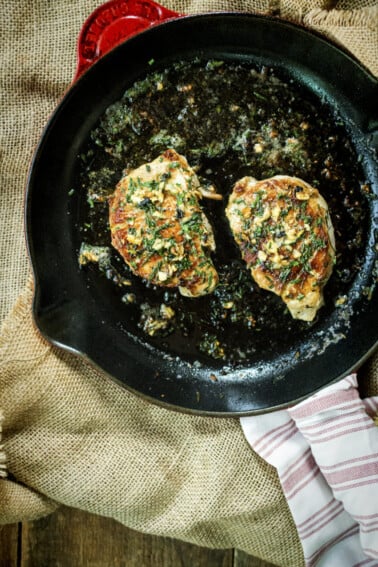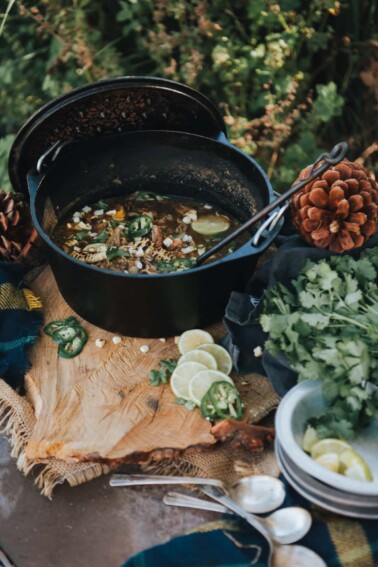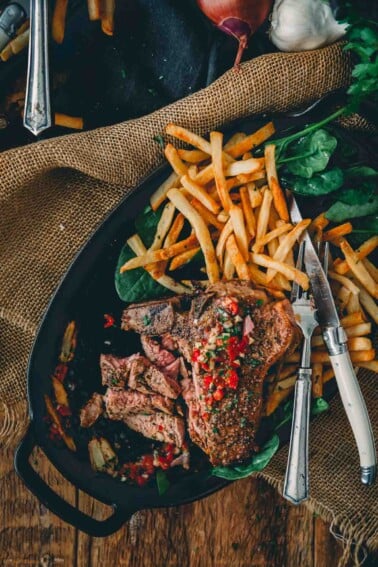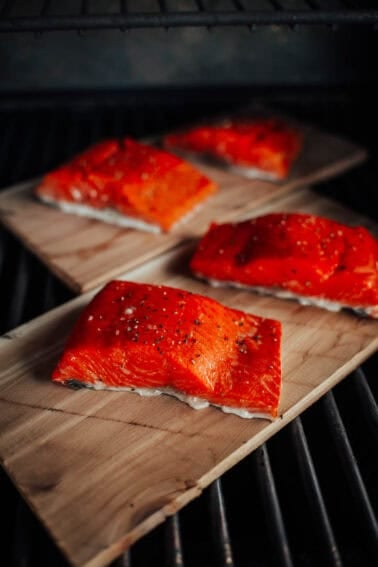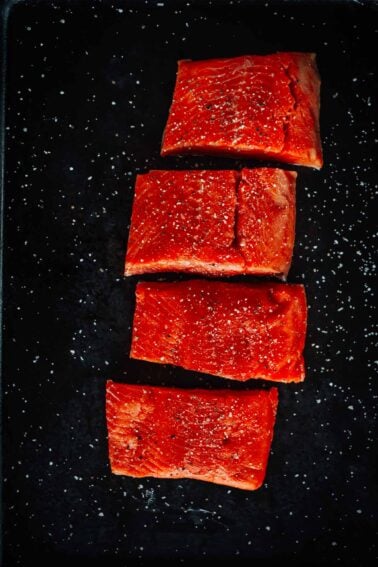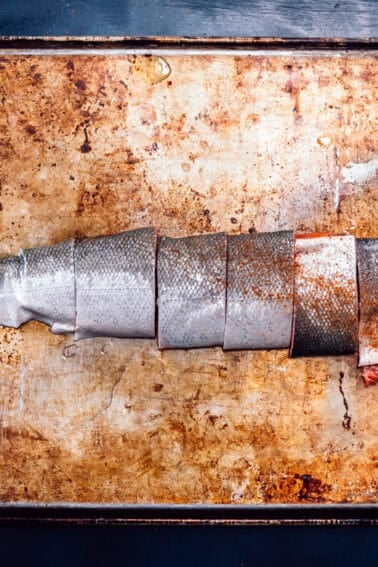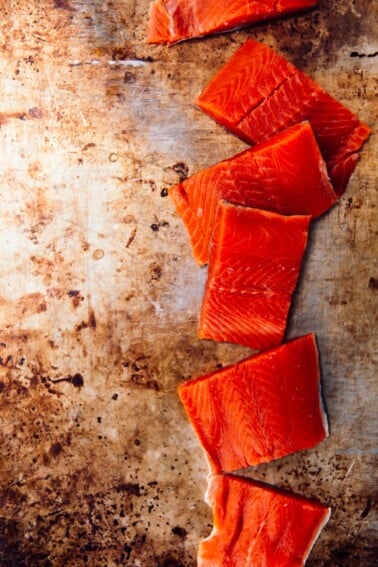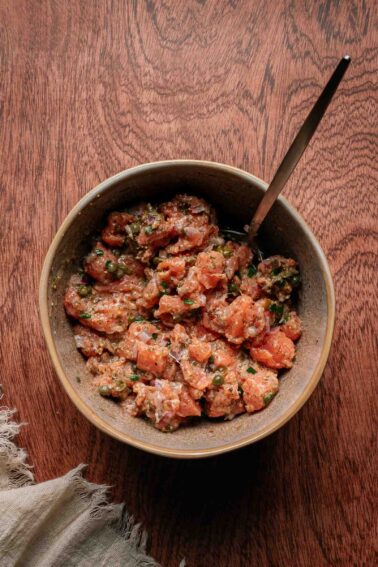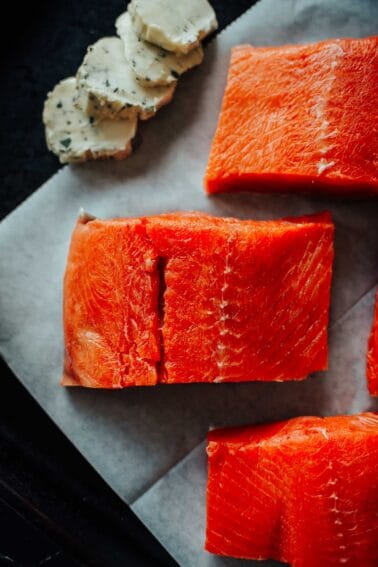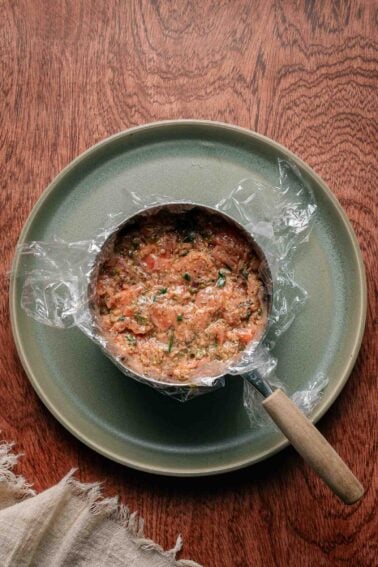Unlock the full potential of your cast iron skillet with our comprehensive cleaning guide. You’ll not only extend its lifespan but also improve the taste and quality of every meal you cook. Trust us, the sear you get on cast iron is the best.
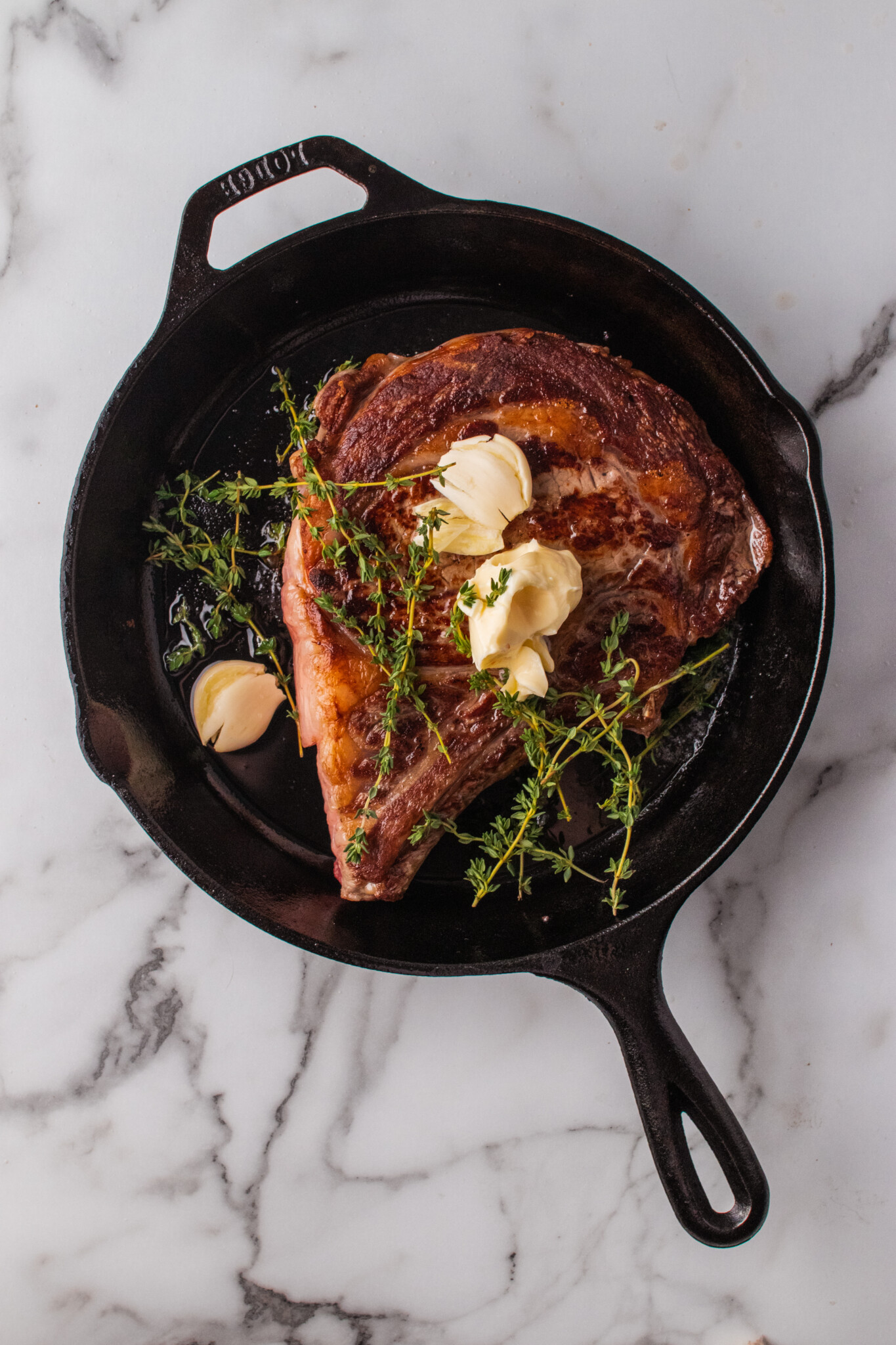
Table of Contents
- TL;DR
- Step-by-Step Guide: How to Clean Your Cast Iron
- Step 1: Wash the skillet
- Step 2: Dry the skillet
- Step 3: Season the skillet
- Our favorite Cast Iron Recipes
- Troubleshooting: Handling Stubborn stuck-on bits
- Girl Carnivore Pro Tip
- Long-term care for cast iron skillets
- Common Mistakes to Avoid when Cleaning Your Cast Iron
- MORE HELPFUL HOW TOS
- How to Clean Cast Iron Recipe
- FAQs
TL;DR
- To clean a cast iron skillet, gently rinse and scrub with hot water, using mild soap only when necessary.
- Prevent rust by thoroughly drying, preferably by heating, and then reseasoning with oil after each use.
- Avoid dishwashers and abrasive materials, and use special techniques for stubborn grime, to keep your skillet durable and long-lasting.
Cleaning and maintaining cast iron cookware is essential to ensure its longevity and optimal performance in the kitchen. It’s an essential tool for going from the range right to the oven, over a campfire, or directly on the grill grates.
It’s also great for a variety of cooking methods like searing, baking, or slow braising. From getting perfect crust using the reverse sear method to their ability to retain heat, cast iron pans are known for their durability. They are a tried and true staple in our kitchen for everything from pan-seared chicken thighs with the crispiest skin to a variety of our camping recipes.
However, proper cleaning methods are crucial to prevent rusting, maintain the seasoning of the nonstick surface and preserve the flavor of your dishes. In this article, we will explore various techniques and tips on how to effectively clean cast iron, so you can enjoy cooking with it for years to come. Once you have a clean pan, learning how to season cast iron to prolong its life and make cleaning it even easier is next.
Step-by-Step Guide: How to Clean Your Cast Iron
Cleaning cast iron is an easy three-step process, but you do need the proper technique and tools lest your beautiful pans incur any damage. The amazing thing about cast iron is, in most cases, you can take even the worst rusty pan and bring it back to life with some good care.
Treat it right and your skillet will last a lifetime and likely be in good enough condition to pass on to the next generation. That’s how tough this kitchen equipment is. Cast iron’s durability, longevity, and plastic-free nature make it a sustainable choice worth considering.
Unlike any other cookware, cast iron can get better with age if you take care of the layer of seasoning. It also holds a nice, even heat, making an excellent tool for quick and easy skillet dinner meals, and gets the perfect crust on pan-seared steak recipes.
However, cast iron isn’t indestructible. For example, it’s not dishwasher safe, nor is it scratch-proof, and it will rust if not attended to correctly.

Step 1: Wash the skillet
When it comes to cleaning cast iron skillets, hot water is the go-to resource for getting the job done.
- Begin by cleaning the pan out as best you can with a wooden or silicon spatula, and save leftovers in food-safe containers. We love a plastic pan scraper designed specifically for cleaning cast iron pans like these grill pan scrapers from Lodge.
- Next, place the pan under warm water and rinse off as much remaining food as possible.
- Then, hold a scouring pad or cleaning brush specifically for cast iron and gently scrub the surface as needed.
- Typically, you only need to scrub for a minute or so before the pan returns to a spotless state.
“After using a cast iron skillet, I like to let it cool down a bit and then wipe out the bits of food and grease with a paper towel or damp cloth.” — Lara Clevenger, LaraClevenger.com
Step 2: Dry the skillet
Drying the skillet is the primary way we preserve long-term quality and keep it free from rust.
- Set the pan over medium-high heat until the water evaporates off the surface.
Step 3: Season the skillet
The process is as simple as it sounds
- The pan will be exceptionally hot after drying it out. Choose any cooking fat from lard or tallow to olive or flaxseed oil and wipe it around with a paper towel. Rub oil over all surfaces, inside and out.
This seasoning method effectively creates a bond with the iron, thereby creating a natural nonstick coating that is so closely associated with cast iron cookware. It’s precisely this nonstick coating without chemicals that we’re after because cast iron cooking is great for just about anything from cabbage stir-fry to fish and even eggs.
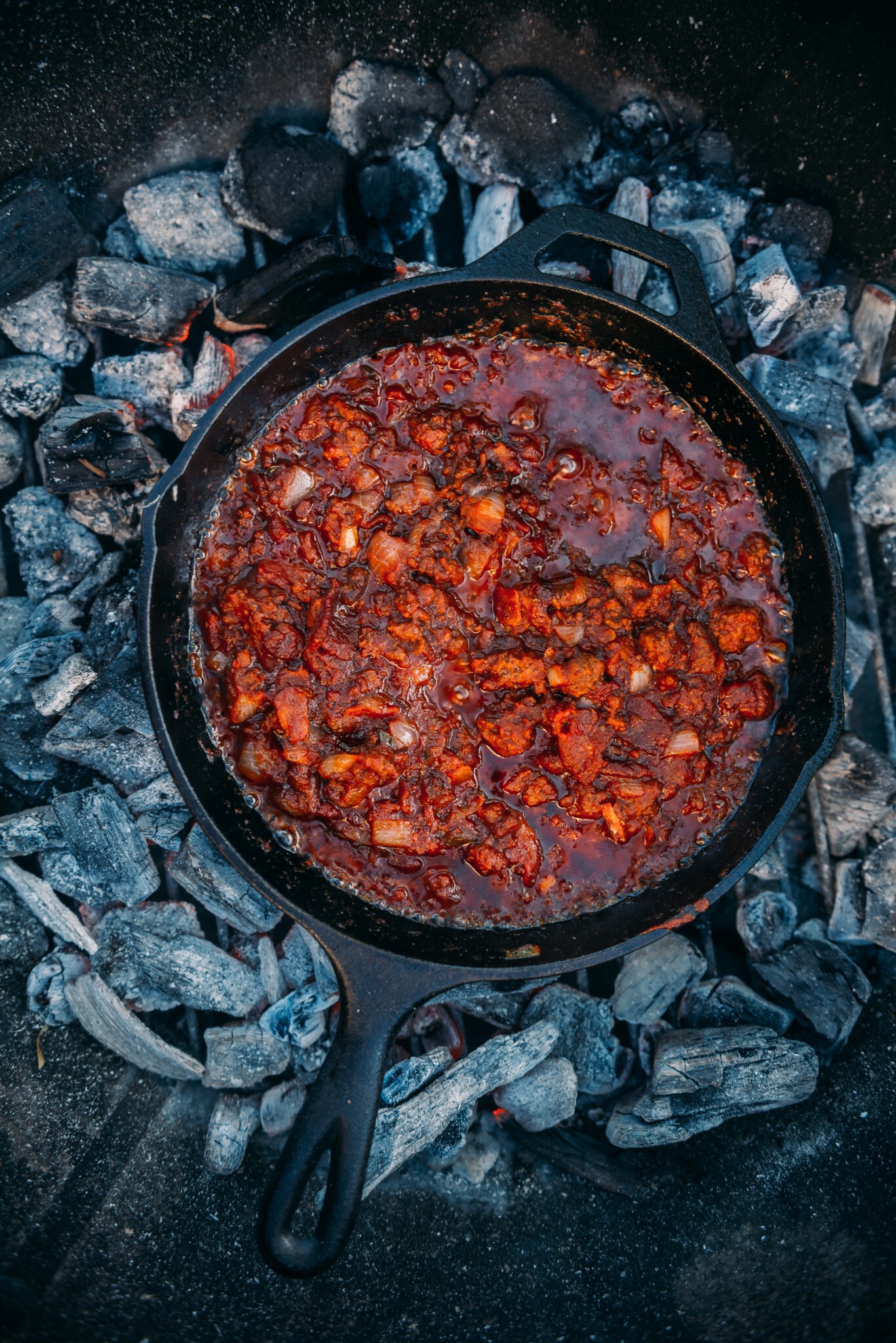
“After I wipe the skillet dry with a dish towel, I put it on the stove over medium heat. Then, once it’s totally dry, I pour a little cooking oil in, and wipe that around the skillet with some paper towels. I can have cast iron cleaned and put away in less than 5 minutes!”
— Sara Nelson, Real Balanced
Our favorite Cast Iron Recipes
Recipes With Pork
Pan Seared Pork Chops
Beef Recipes
Perfect Pan Seared Ribeye
Campfire Recipes
Dutch Oven White Chicken Chili
Poultry Recipes: Chicken, Turkey & Duck
Pan Seared Duck Breast
Seafood
Pan Seared Salmon
Veal Recipes
Pan Seared Veal Chops
Troubleshooting: Handling Stubborn stuck-on bits
You might be tempted to soak the pan in water as a way of softening up crusted and stuck-on food bits. Even though this works with regular dishes, please don’t make it a practice with your cast iron.
Instead, add water to the pan and heat it on the stovetop until it just starts to simmer. Scrape the cooking surface of the pan with a wooden spatula and continue heating until the water boils. Don’t risk scratching the coating with metal utensils.
As the steam forms bubbles, it loosens the stuck-on food, making it easy to scrape off.
If stubborn food continues to stick, Gina Matsoukas from Running To The Kitchen, recommends making a paste with water and salt if the problem persists. Apply the salt scrub to the pan’s surface and spot clean with a folded kitchen towel or washcloth.
For seriously rusty cast iron skillets, spread 1 cup of salt on a still-warm pan. Then, likewise, fold a towel and scour the trouble zones. Finish off with a final rinse, and dry and season like normal.
Girl Carnivore Pro Tip
To get the best seasoning and make cleaning easy, break in a new cast iron skillet with foods like bacon. Start over low heat and allow the fat to render. Make bacon a few time’s in your new skillet or whenever you need to re-season it to give the pan’s seasoning a boost.

Long-term care for cast iron skillets
The best way to get the cleanest pan is through regular use and proper care. The more you use it and care for it, the better the non-stick coating will be.
Avoid a gummy pan by maintaining a nice slick seasoning. Too much oil will build up into a sticky surface, so wipe any excess oil off with a clean paper towel every time you use it. If this ever happens, wash it off with hot water, dry thoroughly, and reseason with a thin layer of oil.
Be consistent by following the simple steps of washing, drying, and seasoning a cast iron skillet, and you’ll love having a clean and reliable piece of cooking equipment for all your one-pan meals and culinary needs.
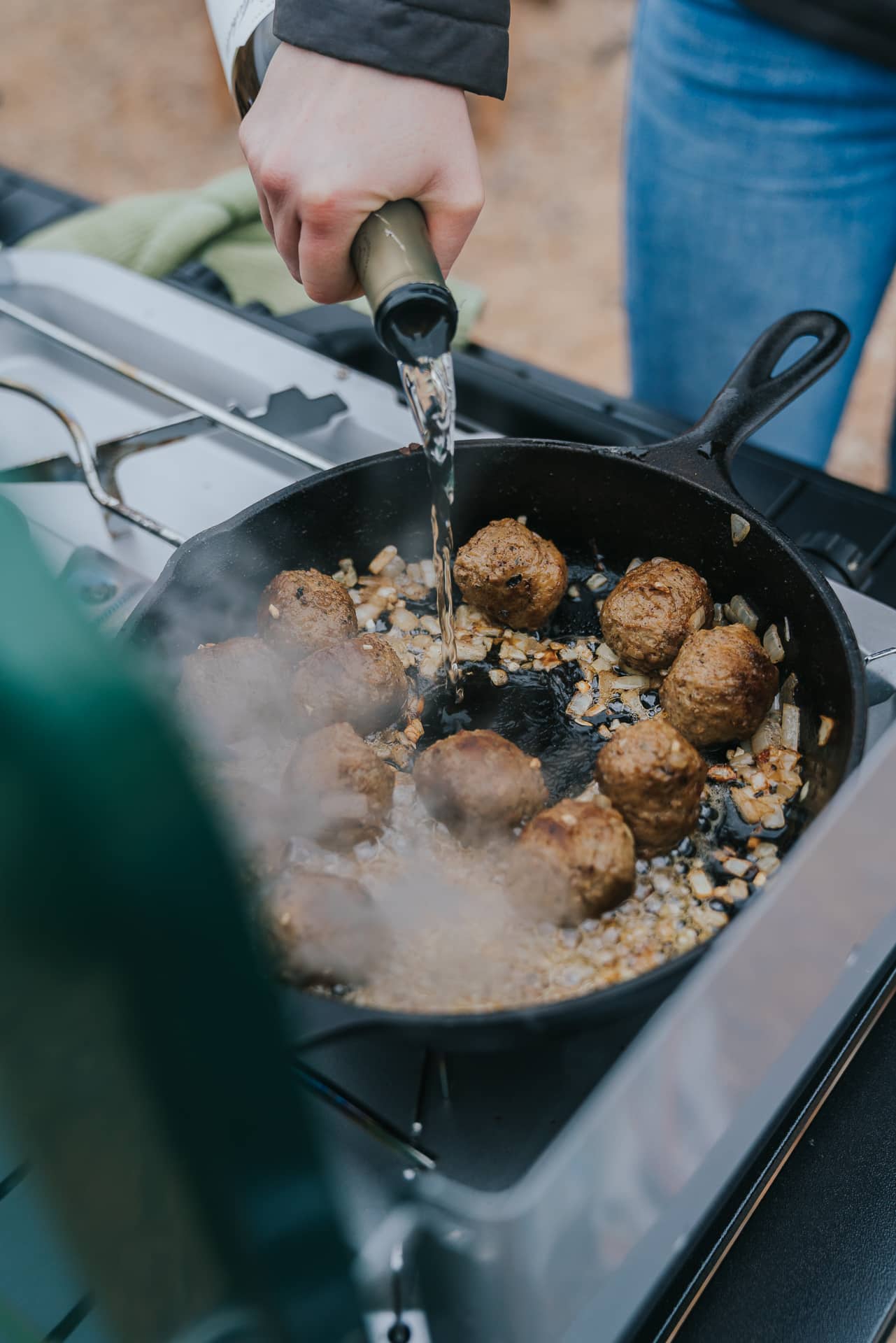
Common Mistakes to Avoid when Cleaning Your Cast Iron
- Using the dishwasher: Cast iron should never be cleaned in a dishwasher. The intense water and heat can strip away the seasoning and lead to rust.
- Soaking in water: Extended exposure to water can cause your skillet to rust. Always dry your skillet thoroughly after washing.
- Using harsh detergents or cleaning agents: Mild soap is generally safe for well-seasoned skillets, but harsh chemicals can strip the seasoning.
- Scrubbing with metal or harsh scouring pads: These can damage the seasoning on your skillet. Instead, use a soft sponge or a special cast iron cleaning brush.
- Not drying it thoroughly: Any leftover moisture can cause your skillet to rust. After cleaning, dry your skillet thoroughly, preferably on the stove over low heat.
- Not reseasoning after cleaning: Reseasoning is crucial for maintaining the non-stick surface of your skillet. After each cleaning, apply a light layer of oil to the skillet.
- Not cleaning after every use: Even if it doesn’t look dirty, food residue can stick to the skillet and burn the next time you use it, potentially damaging the pan’s surface. Always wipe it with a kitchen towel or paper towel.
- Using too much oil when seasoning: Too much oil can result in a sticky surface. It’s better to apply a thin, even layer of oil when seasoning your skillet.
- Cooking acidic foods: Acidic ingredients like tomatoes and citrus can break down the seasoning on your cast iron if cooked for too long. Try to minimize cooking foods like tomato sauce in your cast iron cookware.
MORE HELPFUL HOW TOS
How to Clean Cast Iron
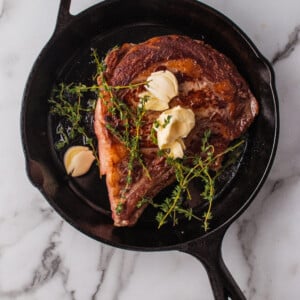
Recommended Equipment
- Cast Iron Skillet Dutch oven, or griddle
Ingredients
- spatula or plastic scraper
- scouring pad or cleaning brush specifically for cast iron
- kitchen towel or paper towels
Instructions
Step 1: Wash the skillet
- Begin by cleaning the pan out as best you can with a wooden or silicon spatula, and save leftovers in food-safe containers.
- Next, place the pan under hot water and rinse off as much remaining food as possible.
- Then, hold a scouring pad and gently scrub the surface as needed.
- Typically, you only need to scrub for a minute or so before the pan returns to a spotless state.
Step 2: Dry the skillet
- Drying the skillet is the primary way we preserve long-term quality and keep it free from rust.
- Set the pan over medium-high heat until the water evaporates off the surface.
- Allow the pan to cool 5 minutes
Step 3: Season the skillet
- Finally, rub oil over all surfaces, inside and out.
- Dip a kitchen towel in oil and coat the skillet on the inside and our with just enough oil or cooking fat to coat it and make it shiny.
Bookmark this recipe now!
FAQs
A controversial atmosphere surrounding using soap on cast iron gets heated on both sides. Some say yes, while others say no.
America’s Test Kitchen sets the record straight by announcing: Yes, you can use soap on cast iron.
That being said, the statement assumes you’re working on a well-seasoned pan and choosing a mild dish soap.
Chances are, if you’re using a new pre-seasoned pan or have built up a good seasoning yourself, then it’s safe to wash gently with a mild dish cleaning agent.
More often than not, using hot water and a small amount of dish soap combined with a soft sponge is sufficient.
No. Do not put your cast iron skillets or Dutch ovens in the dishwasher.
Water or moisture causes cast iron to rust. To keep your cast iron shining like new, wipe it dry immediately after cleaning it.
You could, but to protect the seasoning, we recommend wooden or silicon utensils and spatulas to maintain the shiny non-stick seasoning on your cast iron.
If food is stuck, create a paste with kosher salt and water, then use this to gently scrub the skillet. Avoid soaking the pan in water, as this can lead to rusting.
Jessica Haggard is a lifelong recipe lover, blogger, and author of multiple cookbooks. She helps people find success with gluten-free, low-carb, and keto cooking at Primal Edge Health. While her second blog, Easy Homemade Life, is dedicated to dishing up super simple, family-friendly recipes along with DIY beauty care and natural homemaking tips.
This article originally appeared on Food Drink Life.
